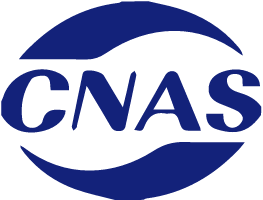<ul id="yy6ca"></ul> <del id="yy6ca"></del> 
basic introduction
The biggest enemy of clothing life is damage. Moreover, the strength of the fabric is also a concern of upstream and downstream textile companies, which not only affects the quality of the finished product, but also has an important impact on the process. It even affects product shipments.
The appraisal indicators of clothing strength are mainly divided into: fabric breaking strength, tearing strength, seam strength, cracking degree, bursting strength and bursting strength. The items and requirements for different product assessments are also different.
Inspection standards
GBT 3923.1-1997 "Textiles, Tensile Properties of Fabrics, Part 1 Determination of Breaking Strength and Breaking Elongation";
GBT 3923.2-1998 "Textiles, Tensile Properties of Fabrics, Part 2 Determination of Breaking Strength, Grab Sample Method";
GBT 19976-2005 "Determination of Bursting Strength of Textiles Steel Ball Method";
GBT 7742.1-2005 "Textile fabric burst performance Part 1 Determination of burst strength and burst expansion hydraulic method";
The tearing strength of the fabric is selected from the inspection standard from GBT 3917-2009 "Textile tearing performance of textiles" according to the standard;
Peeling strength According to FZT 80007-2006 "Testing method for peeling strength of clothing with adhesive lining" according to the washing condition of the product, select the corresponding standard and inspection method;
Cracks and seam strength shall be tested according to the method marked in the appendix after the product standard.
Certain product specific test indicators can also be tested at this time, such as the thermal insulation and breathability of thermal underwear, the test standard involved is GBT 11048-2008 "Determination of thermal resistance and humidity resistance under steady-state conditions of textile physiological comfort ", GBT 5453-1997 "Determination of breathability of textile fabrics"; the depilation rate of towel products, water absorption standards include GBT22798-2009 "Testing method of towel product depilation rate", GBT 22799-2009 "Testing method of towel product water absorption ", as well as garments with fillers such as cotton garments, you must also check whether the fillers comply with GB 18383 "General Technical Requirements for Fiber Products for Flocking".
Breaking strength
The breaking strength test is to stretch the fabric sample of the specified size at a constant elongation speed until it breaks.
At present, the main products for evaluating the breaking strength of the fabric are washed and finished clothing, denim clothing and bedding.
There are two main test methods: GB/T 3923.1-2013 "Tensile properties of textile fabrics Part 1: Determination of breaking strength and elongation at break (strip method)" and GB/T 3923.2-2013 "Tensile textile fabrics Performance Part 2: Determination of breaking strength (grabbing method)".
Tear strength
There are two most common test methods for tear strength: impact pendulum method and trouser-shaped sample method.
The impact strength test of the impact pendulum method is to fix the sample on the fixture, cut the sample into an incision, and release the pendulum at the maximum potential energy position. When the movable fixture leaves the fixed fixture, the sample is torn in the direction of the incision Crack, convert the work done to tear a certain length of fabric into tearing force. The test standard is GB/T 3917.1-2009 "Textile fabric tearing performance Part 1: Determination of tear strength by impact pendulum method". This method is mainly used for the detection of denim clothing in daily tests.
The tear strength test of the pant-shaped specimen is to clamp the two legs of the pant-shaped specimen so that the cut line of the specimen is a straight line between the upper and lower fixtures. Start the instrument to apply tensile force to the direction of the incision, record the tearing strength until it tears to the specified length, and calculate the tearing strength through the electronic device. The test standard is GB/T 3917.2-2009 "Tearing properties of textiles and fabrics Part 2: Determination of tearing strength of pants-shaped specimens (single seam)". This method is mainly used for routine products such as shirts, suits for men and women in daily testing.
Yarn anti-slip at woven fabric seams
The measurement of the yarn slip resistance at the seam of a woven fabric means that the rectangular sample is folded and stitched in the width direction, and then cut along the crease, the sample is held by the gripper, and applied perpendicular to the seam direction Tensile load, the amount of slip generated when a predetermined load is applied is measured.
In the daily test, the commonly used standard is GB/T 13772.2-2008 "Determination of yarn slip resistance at the seam of textile woven fabrics Part 2: Constant load method", which is mainly used for testing conventional woven fabrics.
When the finished garment is detected in this project, we will test the yarn slippage (also called the degree of cracking) at the seam of the garment according to the requirements and methods specified in the corresponding product standards. Different product standards have different regulations on sample size, fixed load value, sampling location, and result judgment. such as:
GB/T 2664-2009 "Male suits and coats" and GB/T 2665-2009 "Female suits and coats" stipulate that the imposed load is
Fabric: (100±2)N, Lining: (70±1.5)N
GB/T 18132-2008 "Silk Garment" Regulations
Fabric: Applied load (67±1.5)N with a grammage>52g/m2, applied load (45±1.0)N with a grammage≤52g/m2 or >67g/m2, and applied load (70±1.5) for lining )N.
Seam strength
The test of woven fabric seam strength is to stretch a sample of specified size (with a seam in the middle) at a constant elongation rate perpendicular to the seam direction until the seam fails. Record the maximum force value that reached the seam failure.
The common woven fabric seam strength test has the following two methods:
GB/T 13773.1-2008 "Seam Tensile Properties of Textile Fabrics and Their Products Part 1: Determination of Seam Strength by Strip Method" and GB/T 13773.2-2008 "Seam Tensile Properties of Textile Fabrics and Their Products Part 2: Determination of seam strength by grabbing samples".
In addition, in some product standards for trousers, such as single clip clothing, trousers, washed clothes, denim clothing, etc., the test of the seam strength of the back seam of the pants is slightly different from the test of other seams. The main test process is to take a 50mm×200mm sample with the tangent point as the sample center at the arc of the crotch seam of the finished pants. Set the instrument spacing to 100mm and the stretching speed to 100mm/min. Clamp the two ends of the sample into the clamps, the suture is located at 1/2 of the two jaw lines, start the instrument until the suture breaks. Calculate the average value of 3 samples, round to 1N.
The test of the seam strength of some knitted products is to clamp the middle part of the sample containing a seam with a clamp of the specified size, and apply a constant elongation rate of stretching along the horizontal or vertical direction of the sample seam until The specimen is broken. The main test method is FZ/T 01031-2016 "Determination of seam strength and elongation of knitted fabrics and elastic woven fabrics".
Bursting strength & bursting strength
Bursting strength
Bursting strength test is to clamp the sample in the circular sample holder of the fixed base, and the spherical mandrel pushes the sample vertically at a constant moving speed to deform the sample until it breaks. Strong.
The test standard is GB/T 19976-2005 "Determination of Textile Bursting Strength Steel Ball Method", which is mainly used for the detection of knitted products.
Burst strength
The burst strength test is to clamp the sample on the extensible diaphragm and apply liquid pressure under the diaphragm to expand the diaphragm and the sample. Increase the liquid volume at a constant rate until the sample ruptures, and the burst strength and burst expansion can be measured.
The test standard is GB/T 7742.1-2005 "Textile Fabric Bursting Performance Part 1: Determination of Bursting Strength and Bursting Expansion Degree Hydraulic Method", which is mainly used for the detection of wool knitwear.
Key Points of Power Test
First, the humidity control of the sample must not be forgotten. All strength tests require pre-conditioning, conditioning and testing in accordance with GB/T 6529.
Second, the choice of test method is a prerequisite. It is the premise to select the correct standard and test method according to the characteristics of the product.
Again, pay attention to the details of the sampling. The selected sample should be representative, avoiding wrinkles and cloth edges, and the sampling position should be more than 150mm away from the cloth edge. Every two samples should not contain the same warp or weft yarns, that is, the step method is used for sampling. The size of the sample and the setting of the instrument should strictly follow the requirements of the standard.
Finally, it is important to determine whether the test results are valid. Determine whether the test result is valid according to the standard requirements. If you discard the test result, you need to resample to test. Special circumstances that occurred during the test should also be recorded.


BSCI certification is an abbreviation of BusinessSocialComplianceInitiative, and Chinese is called business social standard certification. BSCI is an organization that advocates the business community to abide by social responsibility. At the same time, it is a non-profit organization.

CMA, the name is \"China Metrology Accreditation\", the abbreviation of \"China Metrology Accreditation\" in English. According to the provisions of Article 22 of the Metrology Law of the People’s Republic of China: “The product quality inspection agency that provides notarized data to the society must be evaluated by the metrological administrative department of the people’s government at or above the provincial level for the capability and reliability of metrological verification and testing. Qualified.\"

Laboratory accreditation is a third-party certification that CNAS has the ability to perform specific testing and calibration work for testing and calibration laboratories.
The biggest enemy of clothing life is damage. Moreover, the strength of the fabric is also a concern of upstream and downstream textile companies, which not only affects the quality of the finished product, but also has an important impact on the process. It even affects product shipments.
Get a quote